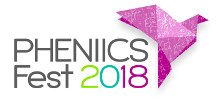Orateur
Description
The High Luminosity LHC (HL-LHC) is an upgrade of the LHC to achieve instantaneous luminosities a factor of five larger than the LHC nominal value. The Future Circular Collider (FCC) study is developing designs for a higher performance particle collider to extend the research currently being conducted by present colliders. For these two project, the investigation of beam interactions with the environment and the resulting disturbances of beam is a crucial question in particle physics detector technology. Understanding of the beam interactions with the vacuum chamber wall is an essential requirement to provide solutions to mitigate the instabilities and gas desorption due to the electron cloud phenomena, photonic and ionic desorption. For instance ions produced by interactions of the electron cloud with the residual gas generate desorption by striking the surfaces [1], which in some regions of the accelerators can be a limiting factor for the machine performance. Theoretical and experimental studies will be performed at the Linear Accelerator Laboratory (LAL) at France, in collaboration with CERN, in order to understand the influence of these physical phenomena on the gas density distribution inside the beam pipes. First, this research deals with the development of a new software based on an analytical model of gas dynamics, by taking into account the cross-desorption by ions of one gas species of other adsorbed gas species [2] (namely the four dominating gas species H2, CH4, CO and CO2). Desorption engendered by the electron-cloud and the ions will be reviewed and integrated into a simulation of dynamic pressure distribution program: VASCO (VAcuum Stability COde [2]) and PyVASCO ([4]). Experimental tests will be carried out at CERN, on the Vacuum Pilot Sector (VPS) already established on the LHC [3]. VPS allows now to study beam-surface interactions with the nominal beams of the LHC. Measurement and characterization of desorption rate is carried out according to surface, energy of incident particles, irradiation angle, ion species, and nature of vacuum pipe material. The results of these studies could be used as new inputs in the software to determine new thresholds for instability in the present LHC, its high luminosity upgrade and for the FCC study.
[1] THE ION IMPACT ENERGY ON THE LHC VACUUM CHAMBER WALLS
O.B. Malyshev, CERN, Geneva, Switzerland
Proceedings of EPAC 2000, Vienna, Austria
[2] ION DESORPTION VACUUM STABILITY IN THE LHC
THE MULTIGAS MODEL
O.B. Malyshev and A. Rossi, CERN, Geneva, Switzerland
Proceedings of EPAC 2000, Vienna, Austria
EPAC 2000, Vienna, Austria
[3] THE LHC VACUUM PILOT-SECTOR PROJECT
B. Henrist, V. Baglin, G. Bregliozzi, and P. Chiggiato, CERN, Geneva, Switzerland
Proceedings of IPAC2014, Dresden, Germany
[4] ANALYTICAL METHODS FOR VACUUM SIMULATIONS IN HIGH ENERGY ACCELERATORS FOR FUTURE MACHINES BASED ON THE LHC PERFORMANCE
Ida Aichinger, CERN, Geneva, Switzerland, 2017



